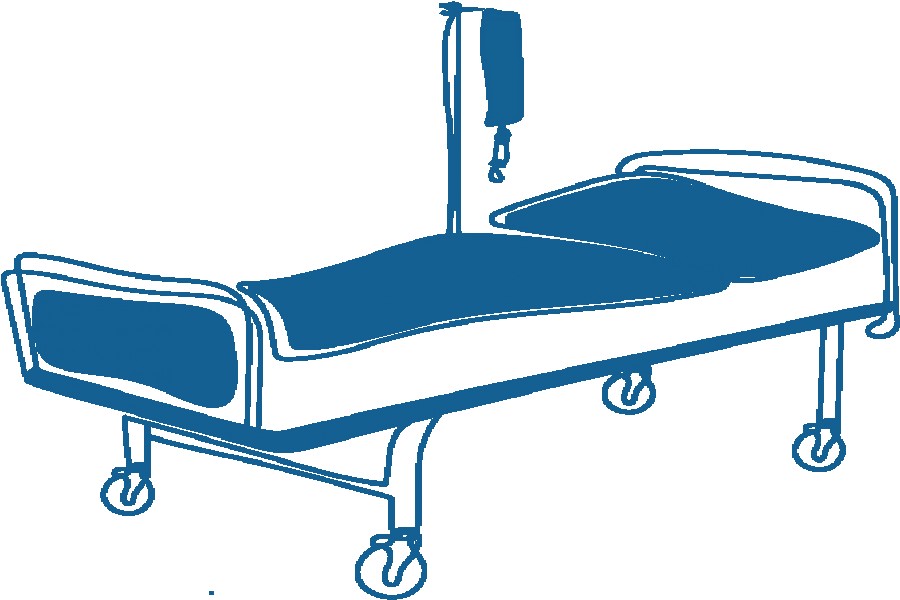When a patient's expectation in a health encounter is met, the patient is said to be satisfied and when not, the patient remains unsatisfied. Two patients receiving the exact same care from a healthcare professional or service provider can differ in their satisfaction ratings because of their different expectations.
Patients have different expectations of the care delivered by a health professional and this can vary by their age, gender, education, income, place of residence, health awareness, and their own perception of the seriousness of the illness. Quite often, they have a predetermined notion about what makes good quality care. In Bangladesh, relatives and well-wishers also have a strong influence on the patient's perception or opinion of the care he or she receives.
Patient satisfaction, more formally, is the degree of positive feeling that patients experience after using a healthcare service. It designates the difference between the anticipated quality of service and the real experience of the service provided from the patient's point of view.
From the business perspective, it is recognised and supported by numerous research studies that satisfaction influences adherence and seeking further medical attention. For the healthcare service industry, adherence to the prescription, diagnostic tests, and other advice provided by a health professional is most critical in ensuring good care as patients may not feel obligated to follow through and go back to the same care provider for follow-up care if they do not perceive that they were given due attention and seriousness or the attending health professional was not competent enough nor was sincere in listening to them or understanding the health issue. Till today, a large segment of the Bangladeshi population often seeks medical care from informal or alternate medical practitioners because of this very reason of low satisfaction, and a lack of trust or confidence even though low income, low literacy, distance, and lack of health awareness are blamed for not seeking timely and adequate medical care in Bangladesh. Missing follow-up care visits including not completing the treatment regimen is quite a common practice here.
Health professionals and organisations including large hospitals must develop a system to solicit, collect and analyse patients' evaluation of the care they provide as this is a vital tool for them to 1) create and provide opportunities for improvement, 2) meet patients' expectations, 3) monitor healthcare service delivery performance, 4) provide benchmarks to assess their performance record and trend and then compare or contrast with other professionals or healthcare institutions, 5) make strategies for better decision making, 6) develop strategies for effective management decisions, and finally 7) reduce business cost.
There are two approaches for evaluating patient satisfaction- qualitative and quantitative. Standardised questionnaires (self-reported, interviewer-administrated, or by telephone or online) have been the most common assessment tool for conducting patient satisfaction studies. There are a number of publicly available and standardised instruments that Bangladeshi hospitals can easily adapt, translate and use. Such instruments have good reliability and validity.
Patient satisfaction always leads to patient fidelity. It also helps in creating staff morale, motivation, and determination leading to reduced absenteeism and turnover. All of these results in improved productivity. Customer satisfaction generates steady profitability which is often the primary motive for private businesses; hospitals are no exception. A reverse correlation has been reported between patient satisfaction levels and medical misconduct and malpractice suits in the USA and other high-income countries.
Patient satisfaction leads to increased personal and professional satisfaction for health professionals as patients' improvement after the care delivered and received makes the care providers happier, more confident, and more content. The happier the doctor, the happier will be the patient; again, the happier the patient, the happier will be the doctor.
Patient satisfaction is now unanimously accepted as the most important indicator by various accreditation agencies like the International Organization for Standardization (ISO), the National Accreditation Board for Hospitals (NABH), and the Joint Commission on Accreditation of Healthcare Organisations (JCAHO). All of these focus on quality service issues.
Patient satisfaction is an integral component of the quality measures of healthcare services or ranking of a healthcare institution like a hospital. It is becoming a popular and widely accepted healthcare quality indicator. The U.S. Centre for Medicare and Medicaid Services, the federal government agency lists some elements of patient satisfaction. Communication with nurses is put as the number-two element which is not even on the radar of any Bangladeshi hospital.
Patient satisfaction level is generally reported to be quite low in Bangladesh for most hospitals including its very large, urban, specialised, tertiary care facilities.
Healthcare professionals and managers need to start taking this seriously as it has a direct relationship with service delivery quality, reputation, staff morale, patient retention, and thereby profitability. Bangladeshi hospitals need to create a business and work culture where all their plans, activities, business processes, and strategies focus on creating and maintaining better patient satisfaction.
Hasnat M Alamgir is a Professor and Head of Public Health, State University of Bangladesh.
[email protected]


